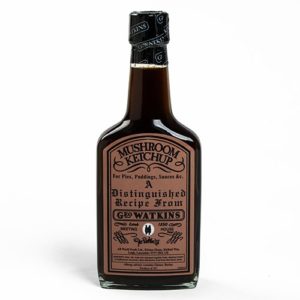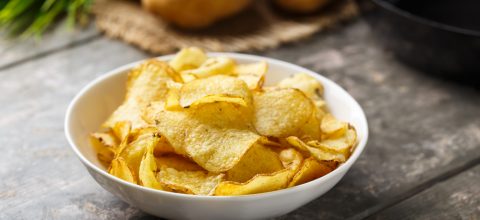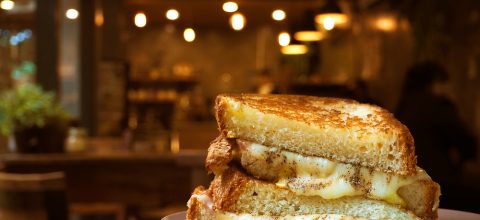It’s all anchovies to me. Why anchovies? When people hear the word and begin to visualize them in their culinary memory, they think of the salty shriveled up pieces of nastiness on a pizza. Around Chicago, anchovies appear even on Greek salads and may show up across the land in the ubiquitous almost “generic/vanilla” tasting Caesar salad dressing. Why talk about anchovies, and what does celery salt have to do with this? Well, it has to do with my kitchen cabinets and what I always have stocked in them.
As a chef as and a man married to a trained chef, there are a lot of condiments in the house. If there is a type of mainstream ethnic cuisine out there, one of us has probably bought the staples to create the traditional flavors expected in the finished dish. Why is this important? It always comes down to flavor, depth of flavor and balance. So, from mustard oil to Sambal Oelek, liquid smoke to Thai fish sauce, it is usually in the pantry or fridge. (By the way, I am still working my way through the mayonnaise adventure we talked about last month. Is this crazy?) If you can guess by now, there is plenty of celery salt in my cabinet. Not one of my wife’s favorites, but essential for the perfect bloody Mary or the iconic Chicago-style hot dog. For those out of the state of Illinois, it’s the garden on a hotdog version. Yes, I even keep a jar of bright green relish on hand for sudden cravings.
 Anchovies may get a “bad rap” in the US, but as the demographics change we are finding this little salted, dried or brined fish making its way onto our tables and into our dishes more often. This is not new. In our known written history of cooking and cuisine, there is a reference to Garum in a book entitled Apicius written somewhere in the 4th or 5th century AD. Garum is a liquid seasoning made by fermenting dried and salted fish. This technique has evolved around the world into Asian fish sauces made from salted fish or squid to English sauces such as Worcestershire or Harvey’s, all of which have anchovy paste as a primary ingredient.
Anchovies may get a “bad rap” in the US, but as the demographics change we are finding this little salted, dried or brined fish making its way onto our tables and into our dishes more often. This is not new. In our known written history of cooking and cuisine, there is a reference to Garum in a book entitled Apicius written somewhere in the 4th or 5th century AD. Garum is a liquid seasoning made by fermenting dried and salted fish. This technique has evolved around the world into Asian fish sauces made from salted fish or squid to English sauces such as Worcestershire or Harvey’s, all of which have anchovy paste as a primary ingredient.
Why did this make a difference and why did it evolve in the first place? It took many centuries for the western world to fully accept the concept of a fifth flavor, Umami (the four original, accepted flavors include sweet, sour, salty and bitter, for those who don’t know). This meatiness or savory flavor comes from the concentration of natural glutamates, which are formed during fermentation and the aging of items such as Parmesan cheese and salted fish sauces. So think about what a real Caesar dressing is made up of: Parmesan cheese and Worcestershire sauce. I am big on the addition of smashed anchovies. The best part about eating a freshly prepared Caesar salad made tableside is the depth of flavor being driven from the punch from the cheese and the pungency of the dressing. Adding these Umami flavors-created from anchovies, soy sauce, dried mushrooms, Parmesan cheese and dry-aged meats and cheeses-are the tricks to bring that little extra something to a dish. The best tenderloin dish I ever had was a braised whole tenderloin wrapped in bacon with anchovies and Madeira.
For my chef friends out there who have had the concept of “mise en place” driven into their heads, having their kitchens in order and everything in place wasn’t just for the dishes on their menus. If you do a little digging, you may find that the concept actually translated to the kitchen cabinet. Even Escoffier was on the anchovy bandwagon. In a little known addition of his Le Guide Culinaire, there is a little compendium called the Escoffier’s Basic Elements of Fine Cooking. In the section about elementary preparations, Fillets of Anchovies are first on the list. The text goes on to say, “whether it be for hors d’oeuvres or for culinary use, it is always best to have them handy.” It also lists a series of seasonings of condiments including items such as ketchup and A1. This is, of course, the American editor taking a few liberties.
So, back to dissecting my cabinets and focusing on what is at the ready. It comes down to a few staples that you should always have mise en place. I break them down like this:
Salt – Iodized for fried foods, Kosher for general cooking and a coarse grain Sea Salt for finishing.
Pepper – Whole Black Pepper Corns in a pepper mill and Ground White for fish and vegetables. Let’s get over the cracked black pepper on white fish and use white from now on. Really!
Fats – Whole Butter is an obvious one, Vegetable Oil for high temp cooking and your favorite Extra Virgin Olive Oil for salads and finishing dishes. Being me, I always have a little Truffle Oil at the ready as well.
Acids – I always have Red Wine Vinegar or Cider Vinegar handy in little squeeze bottles, and citrus acids from whole Lemons and Limes are always in a basket and at arm’s reach.
Seasonings – I always have Whole Nutmeg and a little grater nearby.
Condiments – Open the fridge and you find Worcestershire Sauce, Hot Sauce, Anchovy Paste, Soy Sauce, Fish Sauce, Capers and a variety of Mustards.
Booze – I keep Red Wine, White Wine, Vermouth, Maderia and Whiskey always handy. Beer is optional, but I always have a fridge full. By the way, the IPL I tasted after my last newsletter was delicious.
I keep this organized and ready to go all the time. It’s right there. There are many other items such as vegetable aromatics, fresh and dried herbs and some staples such as dairy and cheeses. These vary during the seasons and based on what cravings I have. The breakdown of the condiments doesn’t change too drastically if it’s Indian, Cuban or even Italian cuisine. Whole Butter can become Ghee, Anchovy Paste may become a Soffrito and Lemons might become Bitter Oranges or Yuzu Limes.
Being prepared is key to making great food. Think about what you have in your cabinet and start using and experimenting with those items. Just don’t grab ketchup or smother things with hot sauce, start making some magic on your own by tasting what’s out there.
Good Read
Escoffier’s Basic Elements of Fine Cooking, Including Sauces and Garnishes
 If you can find this one, it is a great little reference book for classical cuisine geeks. Click here to check it out.
If you can find this one, it is a great little reference book for classical cuisine geeks. Click here to check it out.
Condiments
Mushroom Ketchup

If you are making any kind of sausage, meat pie or marinade, try and find Watkins Mushroom Ketchup.
Beer
Baderbrau Lawnmower Lager

It’s going fast, so grab a few six packs before the lawn gets too tall to enjoy them.










